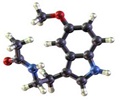- Jet lag is more pronounced when moving from West to East
- Nerve cells called suprachiasmatic secretemelatonin that causes drowsiness
- Body adjusts to the different time zone one hour per day
- Flashes of light delivered during sleep will prevent jet lag.
About the Study
39 study participants were included in the study. These participants were woken up during sleep by flashing moderately bright light for two milliseconds during the second and third hour of their sleep. They studied various patterns of exposure to light and determined optimum levels that helped in staving off jet lag.
Result
- Flashing light is better than continuous exposure to bright light
- The intervention is most effective when lights are flashed every 10 seconds for one hour
- When flashes of light are delivered at the beginning of the night, it delays the rhythm which is applicable to people traveling from east to west.
- When the flashes of light are delivered at the end of the night, it brings forward the rhythm and is applicable to people traveling from east to west.
When light is flashed, it triggers the cells in the retina, which transmit signals to the circadian system to continue to fire even after the light is switched off. Moreover, the continuous light will result in the body getting used to the constant beam of light while light flashes will stimulate the patient.
Researchers Jurvelin H, Jokelainen J and Takala T. studied the effect of transcranial bright light (delivered via the ear canal) in study participants after a transatlantic flight towards the east. The study period lasted for 7 days during which time the study participants were given transcranial stimulation while the control group did not receive it.
- Improved mood
- Less drowsiness
- Lowered forgetfulness
Preventing Obesity Post Jet Lag
Obesity is often associated with jet lag due to the change in circadian patterns. Oike H and associates showed that fixed time feeding prevented obesity among mice whose circadian rhythms were altered.
Circadian Rhythm Variation Increases Risk for Cancer
Certain genes termed the circadian genes are responsible for controlling the physiology of the individual by controlling
- DNA damage repair
- Apoptosis
- Energy homeostasis
- Immune functions
Benefits of Preventing Jet Lag
Intervention strategies that prevent jet lag will help the body cope better and to reduce risks of cancer and inflammatory diseases. It will also help the individual get back to regular routine.
People who will benefit
1. Travelers: People who travel long distances and are jet lagged, especially those who travel transatlantic from east to west will get back to the routine faster, encouraging more travel experiences.
2. Shift workers: People who work in night shifts or in alternating day/night shifts can cope with the change in schedule with effective steps to regain the circadian rhythm.
3. Business travelers and athletes: People who travel often or athletes who need to be physically fit and active to face the challenges of sport require definite preventive strategies.
4. Teenagers: Teenagers who are used to late nights and late mornings find it hard to get into the school routine after a vacation or after the weekend is over.
Future
Researchers Raymond and Jamie are working with Lumos Tech, a technology company, to create a new device that can deliver light flashes and which can be worn as a mask. Further, the researchers are working to develop an App for smartphones that will trigger the light flashes at the right time.
The introduction of a method that does not involve waking the patient up to alter the circadian rhythm will benefit people. This way they will wake up feeling comfortable rather than bleary eyed and in shock. There are other studies involved in formulating pills to prevent jet lag.
References:
1. Raymond P. Najjar and Jamie M. Zeitzer “Temporal integration of light flashes by the human circadian system” JCI, Feb 8th 2016.
2. Jurvelin H, Jokelainen J, Takala T. “Transcranial bright light and symptoms of jet lag: a randomized, placebo-controlled trial.” Aerosp Med Hum Perform. 2015 Apr
3. Kettner NM, Katchy CA, Fu L. “Circadian gene variants in cancer” Ann Med. 2014 Jun
4. Oike H, Sakurai M, Ippoushi K, Kobori M “Time-fixed feeding prevents obesity induced by chronic advances of light/dark cycles in mouse models of jet-lag/shift work.” Biochem Biophys Res Commun. 2015 Sep 25
Source-Medindia













